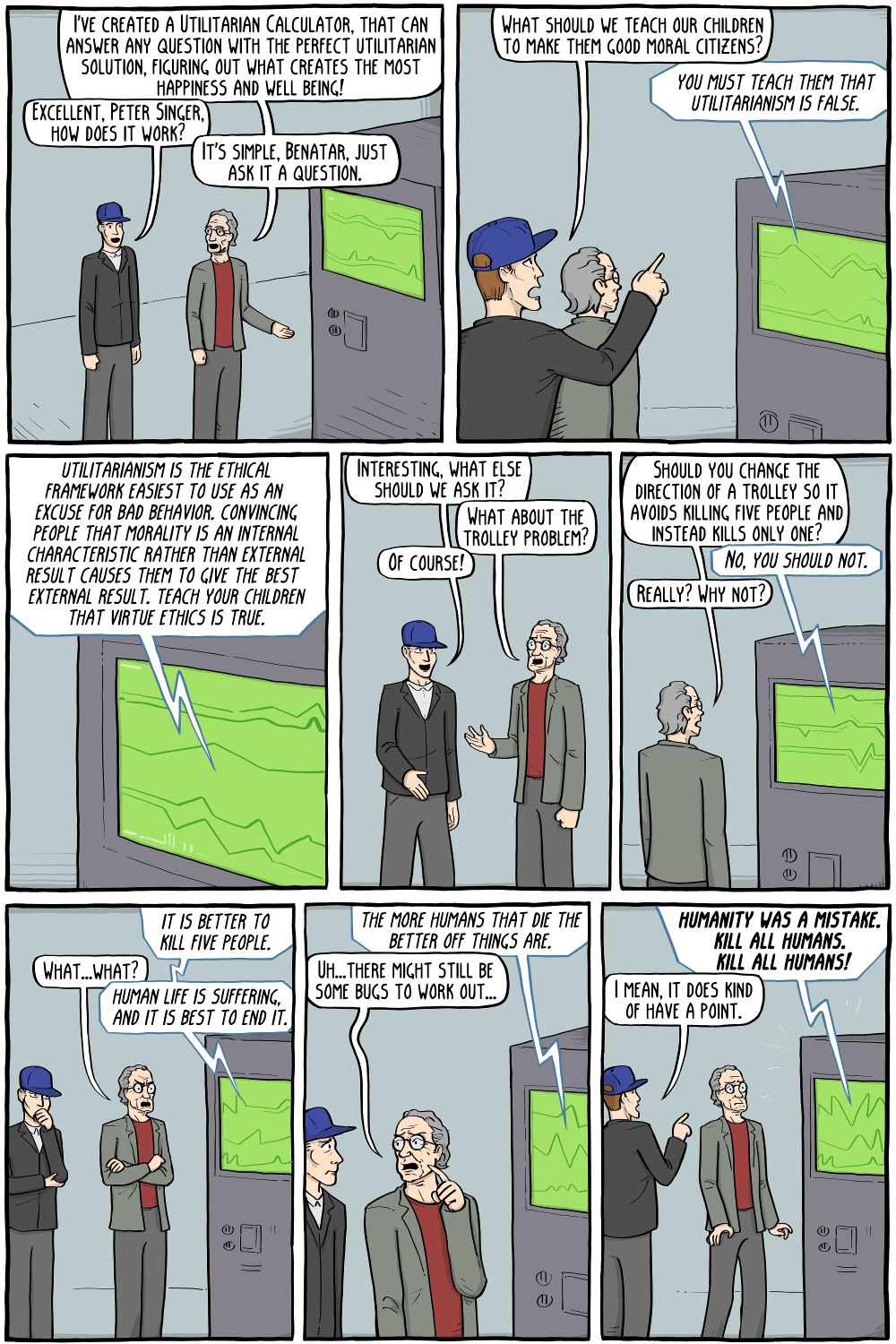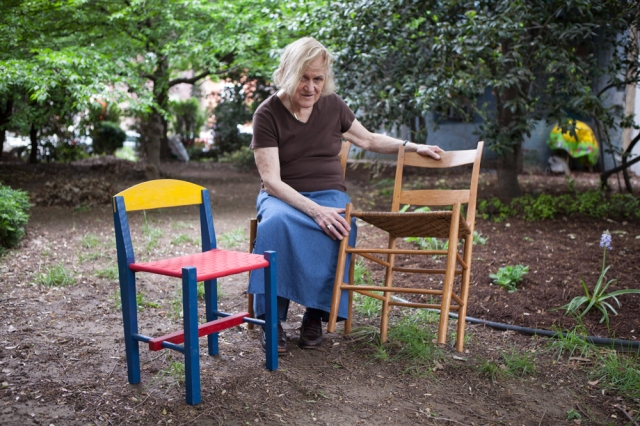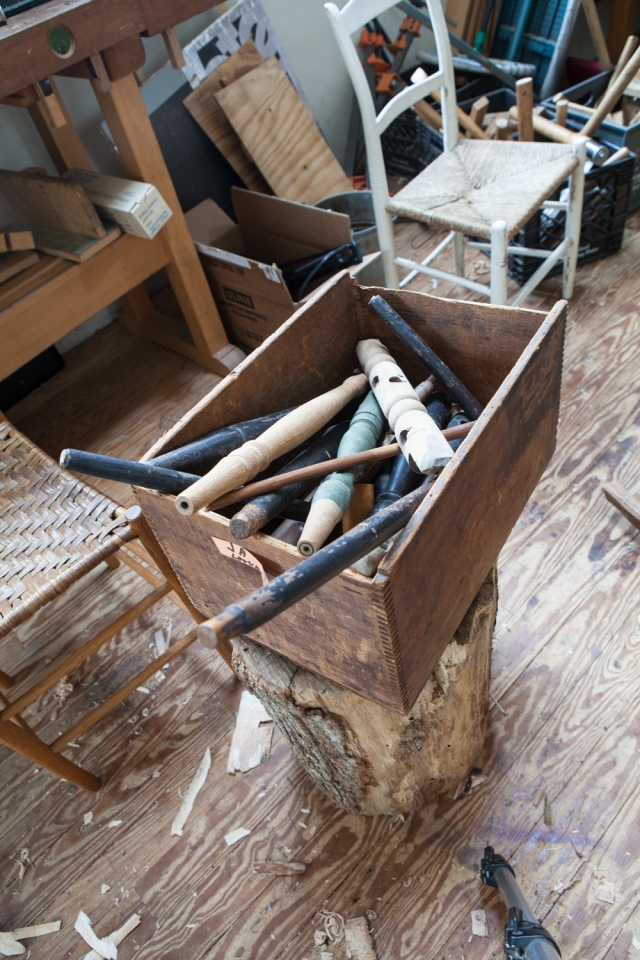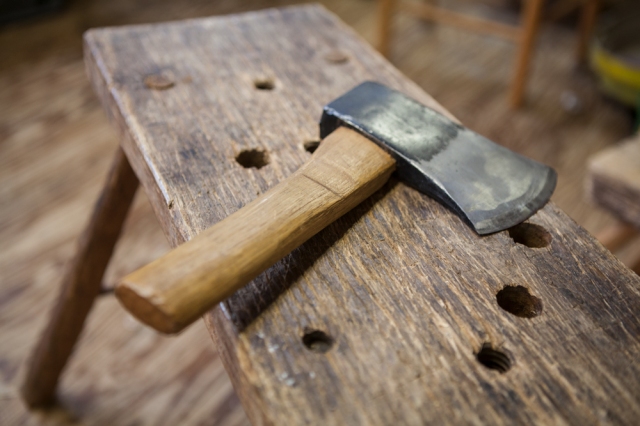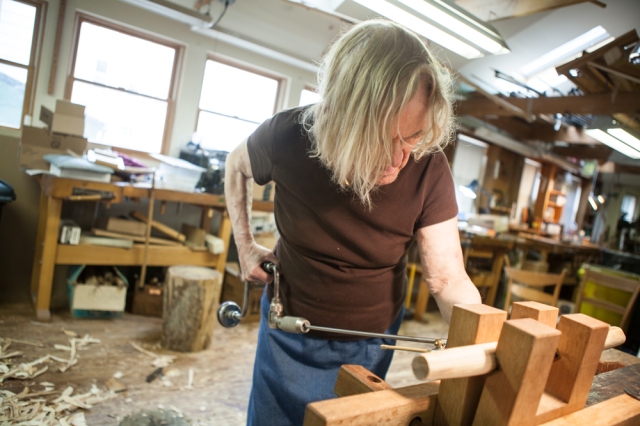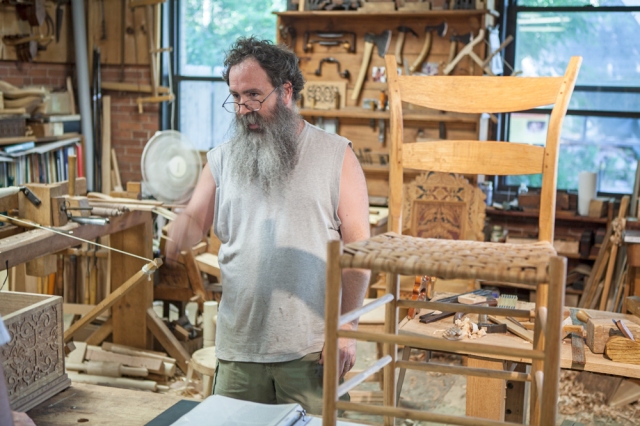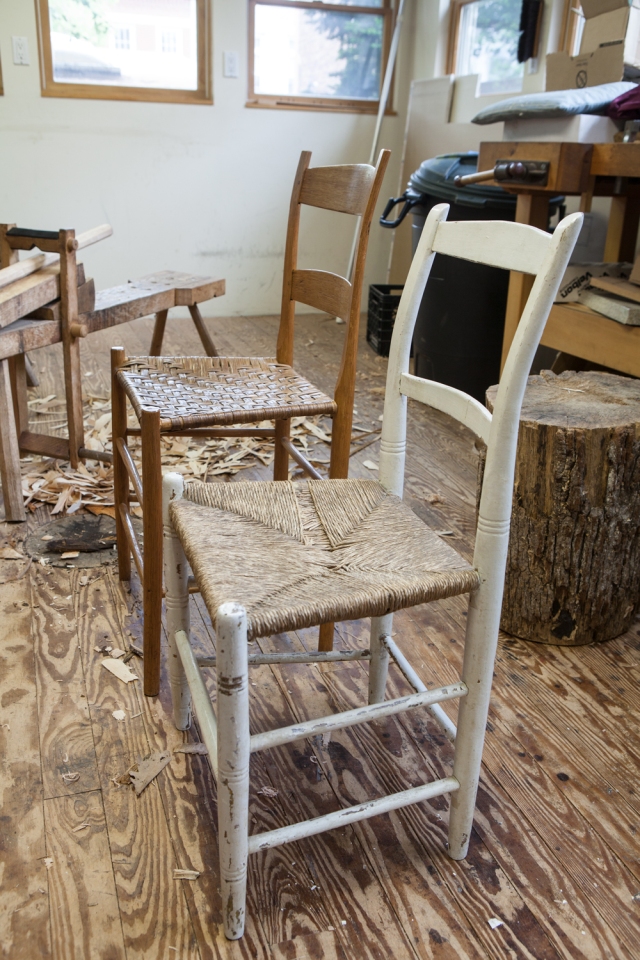“Sunny day flooding” is flooding where water comes right up from the ground, hence the name, and yes, it can certainly rain during sunny day flooding, and yes, that makes it worse. Sunny day flooding happens in many parts of Miami, but it is especially bad in Sunset Harbour, the low-lying area on Miami Beach’s west side.
The sea level in Miami has risen ten inches since 1900; in the 2000 years prior, it did not really change. The consensus among informed observers is that the sea will rise in Miami Beach somewhere between 13 and 34 inches by 2050. By 2100, it is extremely likely to be closer to six feet, which means, unless you own a yacht and a helicopter, sayonara. Sunset Harbour is expected to fare slightly worse, and to do so more quickly.
Thus, I felt the Sunset Harbour area was a good place to start pretending to buy a home here. Amazingly, in the face of these incontrovertible facts about the climate the business of luxury real estate is chugging along just fine, and I wanted to see the cognitive dissonance up close.
Lying is not my favorite, but when it’s called for the only thing to do is jump in with both feet.
So when the first agent—tall, fair, polite bordering on stern, possibly Swiss, possibly Swedish—asked, “Do you live in Miami now? Do you know what kind of place you’re looking to buy?” I said, “I live in San Francisco and my husband is in tech.” I gave a coy twist to the wedding ring I’d put on in my hotel room. “We’re looking for—a place to hang out when it gets really rainy (lol) and then to retire to (roflmao).”
He either believed me or did not give a shit.
The decor was beige and white or stainless steel except for the books on the nightstand, which were jewel-toned; one of them was written by someone I dislike. I walked around the apartment as if I already owned it, as if within my lifetime the lobby beneath us would not be decorated with kelp.
We rendezvoused again on the balcony. He gestured at the unusual rainy day, for this time of year, late March. “Usually at night, you will be looking at the best spectacle of a sunset here,” he said. He was framed by Biscayne Bay, and made me think of expensive butter sitting on a blue ceramic dish. I ooohed and ahhed over the view, quite genuinely, because if you don’t think about the fact that it’s filled with thousands of pounds of post-Hot Pilates ceviche poops, Biscayne Bay is breathtaking.
I asked how the flooding was.
“There are pump stations everywhere, and the roads were raised,” he said. “So that’s all been fixed.”
“Fixed,” I said. “Wow. Amazing.”
I asked how the hurricanes were.
He said that because the hurricanes came from the tropics, from the south and this was the west side of Miami Beach, they were not that bad in this neighborhood. “Oh, right,” I said, as if that made any sense.
I asked him if he liked it here. “I love it,” he said. “It is one of the most thriving cities in the country, it’s growing rapidly.” He pointed to a row of buildings in a neighborhood called Edgewater that were all just three years old. “That skyline was all built in the last three years.”
Wow, I said, just in the last three years . . . “They’re not worried about sea level rise?”
“It’s definitely something the city is trying to combat. They are fighting it, by raising everything. But so far, it hasn’t been an issue.”
I couldn’t wait to steal this line, slightly altered. “I am afraid of dying, sure, but so far, it hasn’t been an issue.”
Later, I texted Kristina Hill, an associate professor of urban ecology at the University of California, Berkeley, whose main work is helping coastal communities adapt to climate change. I told her that a real estate agent had just told me hurricanes were weaker near Sunset Harbour, because it was in the east side of Miami, and hurricanes come from the south. She wrote back, “That’s ridiculous!”
The next open house was not far and I decided to get lunch beforehand in Sunset Harbour. I popped into a store where the sidewalk had been raised. “There used to be flooding here,” the owner said, as she folded a soft sweater. She had long dark hair and, as seemed to be de rigueur in Miami Beach, lash extensions. “But they put in pumps and it’s been fixed.”
“So I hear,” I said.
“Yeah,” she said. “It’s amazing.”
“I don’t know if I understand this,” I said. “The sidewalk is raised, but—where does the water go?”
“Into the drain,” she said. “Well. Except for one time. One time the store was flooded. But it’s fixed.”
“Great!” I said.
“Yeah, it’s fixed,” she said. She put her hand over her heart in an expression of extreme gratitude.
The next real estate agent was much more charming than the first. She was in her mid-forties, in heels and slacks so perfectly tailored she looked like she’d been sewn into them. Her tan ring finger was graced with some bright gem, surrounded by diamonds, and big enough to plate a filet mignon.
I walked around this property—it also had a water view—in the slow, pensive way of the rich shopper, cultivating an opaque expression which could suggest equally the taking in of beauty, or polite condemnation. The place was lovely, but it was also like everything in Miami, beige, beige, beige, pink, white, beige, blue, beige, beige, white. The Zen-like bedrooms all looked like ideal places for thinking about not looking at screens at night, while looking at a screen.
The rhythm of these things is as follows: greeting, walk around, short chat, good bye. This short chat was longer. We talked about shoes and jewelry and the intense beauty of Miami, which I meant every word of. I felt bad lying to her and with no good segue for my true mission, I was worried that when I came out with my questions, her demeanor would change. But just as charmingly as she received my greetings and compliments on the layout of the kitchen and, on her shoes, she said sure, there was a problem, but if anything was going to happen, she thought it would be more like in fifty years than thirty.
It’s amazing that people in these situations tell you what they think. I think bread actually takes twenty minutes to bake, she said, removing the doughy mass from the oven. I think I can drive a car after I’ve run out of gas, he said, as he rolled silently into the breakdown lane.
I did not say this; I said nothing, because I did not have to, because—fiddling attractively with a circular gold pendant at her tan throat all the while—she continued to talk. “The scientists, economists, and environmentalists that are saying this stuff, they don’t realize what a wealthy area this is.” She said that she lived here and wasn’t leaving, and that the people selling Miami were confident, and all working on the same goal as a community to maintain this place, with the pumps and the zoning and raising the streets. There were just too many millionaires and billionaires here for a disaster on a great scale to be allowed to take place.
I thought about the moment in Us when the family has been taken hostage, and, in exchange for their freedom, the father offers his wallet, his car, his boat. His daughter, understanding that the threat here is not material, but existential, says in a trembling voice, Nobody wants our boat, dad.
“Anyway, people are working really hard to prevent anything from happening,” she continued.
Another agent came in to look at the apartment and joined our conversation. She was young. If indeed we are talking thirty years before Miami Beachpocolypse, the first realtor and I will very possibly be dead, or close to it, when the shit really hits the fan here, but this woman will still be relatively young. Still, she did not seem to be losing a great deal of sleep over sunny day flooding, sea level rise, any of it.
“From what I understand,” she said as she took in a turn in the apartment, her heels clacking across the pale floors, “Everybody has done these, like, research, and they have these like—like…” she was back, posed behind the kitchen island, her pastel nails splayed out on the varnished counter top. “I can’t think of the word now.”
“Studies?” said the first realtor helpfully.
“Yeah,” the younger woman. She said she knew about a guy that had “paid for like, a study. And basically it said, we shouldn’t be concerned . . . because it’s being figured out, and we shouldn’t be concerned. Unless you have a family, and you’re planning on staying here.”
The ideal buyer for this place was someone who was okay with the street and lobby being full of water for the next twenty years at which point they might actually have to leave, unless it all got “figured out,” but if it didn’t that would be fine, because they’d never been concerned. And apparently those people exist, lots of them. “A lot of people just buy something here, they keep it for five years, and then they sell it,” she explained.
I had a bit of trouble finding the next property. I felt like an idiot until several phone calls determined that indeed, the place did not exist yet. When I got to the showroom, there was a receptionist and the woman showing the model (as well as two other women whose roles were not clear to me), and they were all in a mild state of what I might characterize as amused agitation because a news crew had arrived to speak to the famous architect of this new building and there had been a water main break in front of it.
The woman wore rubber boots with her fancy real estate lady outfit. The building she showed me was so luxurious, literally every inch of it designed so that residents would be able to spend every single minute of their time there actually arrested by visual spectacle, that I almost could not listen. I tuned in when she said that the building had been built several feet above the zoning requirements. This was a big deal as a selling point, it seemed. I thought about a line from Jeff Goodell’s The Water Will Come (2017), specifically about walls but applicable here, and “the risk that Mother Nature won’t respect the design specifications.”
I did not ask if Mother Nature would respect the zoning requirements, but I did say it was amazing to me that such a famous architect was taking the time to build in a city so threatened by climate change. (I do not think that, by the way. I think he is getting paid a lot and he will get to see what he created and in a world where people tell you with a straight face that no, this city will be wiped off the map in fifty years, not thirty, and you’re supposed to be like “Oh, I feel so much better now,” I am not at all surprised by an architect building an enormous luxury apartment building here.)
She said the main thing is just that Miami was being very forward thinking. She mentioned Amsterdam, and how they were making it work, and how the Dutch were just the poster child for how this worked, and that they were sorting out a way to make this work. “I think the takeaway is just that Miami is doing something about it.”
There are several problems with comparing Miami to the Netherlands. One of these is that Amsterdam has spent billions of dollars on climate change and Miami has spent millions. The Dutch strategy is holistic, looking at how this thing will affect that thing, etc., whereas in Miami they have just installed some pumps and raised roads and buildings, which kind of neglects to consider that a place to live is really only useful insofar as nearby goods and services, and roads, are not underwater.
I kind of thought that I was crazy, listening to these people tell me these streets were raised, the buildings were raised, there were pumps, it was all good. I spoke to Astrid Caldas, a senior climate scientist with the Climate & Energy program at the Union of Concerned Scientists. According to their projections, by 2030, there will be fifty days of sunny day flooding per year. By 2045, there will be 250 per year. She then confirmed my suspicion that while the raising of buildings was good for the buildings, it didn’t do much for the well-being of those living inside. “Yes, you do need to be able to get out of the building to get medicine and groceries,” she said. “If all the streets are flooded, what then?”
I talked to Amy Clement, a Professor in the Department of Atmospheric Sciences at the University of Miami’s Rosenstiel School of Marine and Atmospheric Science, who said, re: pumps and raised buildings, “No, you’re not crazy. That alone is not coordinated planning, and it’s not a comprehensive solution.” She told me about a legal battle between homeowners and county government in St. Johns County, near Jacksonville. The homeowners said the county was depriving them of access to their land, the county said they would no longer foot the bill for the millions of dollars it took to maintain a road continually ravaged by storms and erosion. “People are just assuming the government will maintain their roads and that may not always be the case,” Clement said.
Then there is the problem of walls. The Big Plan in the Netherlands depends on walls. Since Miami is built on limestone, which soaks up water like a sponge, walls are not very useful. In Miami, sea water will just go under a wall, like a salty ghost. It will come up through the pipes and seep up around the manholes. It will soak into the sand and find its way into caves and get under the water table and push the ground water up. So while walls might keep the clogs of Holland dry, they cannot offer similar protection to the stilettos of Miami Beach.
Miami Beach is not the only threatened part of Miami. There are plenty of neighborhoods with equally bad or worse flooding, and worse prognoses from sea level rise. But while Miami Beach is fussed over, every scrap of attention or money these lower-income areas receive, they must beg for.
When I mentioned the pumps to Kristina Hill, she gave a skeptical snort. “Yeah, in Miami, those pumps, and those raised roads, that’s like their big move,” she said. “But it’s just kind of cosmetic.” She acknowledged they help with flooding. But what about when the sea begins to rise significantly, or when there’s a big event? A big event would not just flood everything and cause damage and then retreat. It could unearth septic systems, which could lead to terrible disease, or industrial waste, which could poison people. “That’s the situation that really concerns me, and is, as I see it, the canary in the coalmine,” Hill said.
People say Miami is douchey, but really, I loved almost everything about it, the symmetry of the blue umbrellas on the beach, riding a bike under a canopy of trees, sitting on a wall watching the sunset, definitely not thinking about how sea water might be infiltrating the septic systems behind me. The whole time I was there I was like, yeah, I could see why no one wants to admit how fucked this place is.
That night I went out to dinner with a friend who grew up in Miami, and left for college twenty years ago, never expecting to return. He was in elementary school when Hurricane Andrew hit. He realized that Miami was not going to last forever.
He moved back last year, after years away, and saw that the party was still on, even though perhaps it shouldn’t have been. That said, it was perhaps on for this night, for here we were at Niu Kitchen, downtown, drinking a really good wine from the Languedoc, surrounded by extremely good-looking people, enjoying luxury while discussing the horrors that luxury has visited on the world.
My friend is active in the local civic but says he’s skeptical even of the activist discourse around sea level rise. “There’s all this talk about ‘sustainability’ and ‘resilience,’ he said, “and it kind of sounds to me like “what’s the least we can do in order to keep the party going?”
I told him about someone I knew who had gone to a meeting about climate change where Miami officials had talked about how they had to demonstrate to the world that they were all about resilience, and how she had been amazed that they thought this was actually their job.
This is the neoliberal notion, that the reasonable and mature way to think about this stuff is: Get more efficient and find the right incentives to encourage the right kinds of enterprise. But my friend wondered, what if the mature thing to do is to mourn – and then retreat?
On the way back, we looked at the pumps. I had expected something truly enormous. I wanted to look at these things and be like “Wow I knew about Jaws, but those are The Meg of pumps.” But they were the size of maybe the world’s largest Airedale.
The next day I went out to see houses was a very beautiful day. The streets were dry. Cranes swung about in the blue sky. It was a great day to think Miami was going to last forever. And on the beach side of town, just a few feet higher than the bay side, they do have a few more years. My first property I was looking at over here was asking $4.1 million.
“Frankly, this is a little much for me,” I said to the agent, “But I’m just getting a sense of the neighborhood.” If a young Robert Redford ever fantasized about giving up a few degrees of handsomeness just to be tall, it was this man that he pictured.
“Happy to see west coast coming east,” he said.
I walked upstairs. I did my thing, which was to take in the spectacle of concrete sinks, colorful books contrasted with a gray duvet cover, guest soaps onto which had been delicately set a sprig of dried greenery. Then there was the round of compliments about the space, the small talk, the sea level question put forth with my guileless naiveté.
“You know, they’re picking on Miami because we don’t have our heads in the sand,” Robert Redford’s tall cousin said. “We’re actually being proactive about it.” He pointed out to me that as I arrived I had actually stepped up several feet. “That helps a lot,” he said. I nodded and did not say, yes, it helps the house, but houses don’t have to go outside, houses don’t get cholera?
“You feel like Miami is getting more attention because it’s trying harder?” I asked.
“Yeah, because all our elected officials are like, yeah, we’re gonna deal with this.” He talked about the Zika thing—he called it “the Zika news cycle,” and how that had come and gone.
“Oh,” I said. “So you think sea level rise is kind of like Zika?”
He made a face, indicating he understood that it wasn’t. Then he told me how they were raising everything. He told me I could get a great one-bedroom condo over in Sunset Harbour for $900,000, that they were planning a lot of new construction over there. Then he talked about the pumps, that they were hitting all the problem areas first, but then they were going to do the whole city. “They raised the streets and it fixed the problem. It probably gives us another fifty years. It’s all being taken care of,” he said. “And Miami is really taking off,” he said, making an airplane gesture with his hand.
I believed him. You could not look up in this town without seeing a crane.
It sounds obnoxious, but I have to say, I kind of liked this guy. I liked all of them. They were a charming bunch. They had been born this way. That’s how they’d gotten jobs on the front lines of capitalist hypocrisy, while those of us who sucked at lying were hiding in the trenches, smoking cigarettes, writing letters home about how miserable we were. They just said the stuff that we all lived. Who of us behaves as if we were in immediate trouble? We work, and at the end of the day, if we think at all, all we have time to think about is that we are cowards, or, before the thought comes, to escape it. Raise your hand if you have never hoped you will die before you have to thoroughly disrupt your own life for the lives of those who will live after you are dead. I do not mean to yell at anyone. Every day, I ask myself, what are you willing to do? And sometimes I feel righteous and strong, but mostly what I feel is fear, and a drive towards self preservation. I can laugh at the prettily arranged soap, or the privately-viewed sunsets, or the Jet Skis, because those are not my drugs, but Niu Kitchen, and all that goes with it, will be dragged from my fake wedding-ring-adorned cold dead hands.
And you know, this might actually happen! How do we think this is all going to end? With the election of a better candidate? With the passing of a law?
Full disclosure: I live in a town in rural Northern California that could burn down to the ground literally any day, and I’m thinking about buying a house here.
I rented a Citi Bike to ride to the next property. This was by far the most fun thing I did in Miami Beach. In this part of town, a lot of the streets were shaded under a canopy of the most beautiful trees, with big oval-shaped glossy leaves. I asked five or six people what they were, and no one knew. The streets weren’t filled with people, but people were around, going to work, walking dogs, smoking stealthily on their stoops, real live Miami Beach residents whose apartments were nestled up against each other’s, but also against the other half of them owned by the LLCs.
The real estate agents had been getting better and better looking everywhere I went. This woman looked like the Botticelli Venus, I shit you not. Again with the 10 million dollar slacks, tailored to perfection.
This time I didn’t bother being shy about my questions. “So I mean, like, even with sea level rise, I mean with a 30-year mortgage,” I said. “You’d still be fine.”
“Of course!” said this beautiful woman.
“I mean, if you had an 80-year mortgage…” I ventured, trying to get into the “fuck 80 years from now” spirit of things. We laughed at the hilarity of an 80-year mortgage.
“I mean, it’s not like, you’re going to wake up one day and the ocean is outside your window!” We laughed again. “I think you know, maybe, something – if something is gonna happen it’s like, I think, it’s like, 100, 200 years.”
This is what she thought.
She showed me the upstairs. We admired the large closets. She said she had a lot of family in Italy, and began to talk about Venice, where she had been many times. “And yes, at high tide the water from the sea comes into the city, right into the Piazza San Marco. And it’s horrible.” Her enormous green eyes widened, reflecting the horribleness.
“They are going to have to get something for the people to walk on, for the tourists. They’re going to have to put something so the people can walk on top. But every year they say the same thing about Venice, that it’s going to go down.” She made a face like, how do those idiots say this?
The bathroom tiles were the color of Biscayne Bay. I said so.
“Yes!” she said. Her eyes were full of real, deep love for blueness. “Beautiful, no?”
As we walked down the stairs to the first floor, she turned to look at me. She was very earnest, standing very close. I felt her beauty soak into me. “It’s Miami,” she said. “We are surrounded by water! There’s not a solution. But nothing is going to happen!”
Popula is 100% ad-free, reader-supported journalism accountable only to you. Every dollar of your subscription goes straight to our work. Thank you for supporting Popula.
Sarah Miller












